- Home
- Joyce Carol Oates
Mysteries of Winterthurn Page 21
Mysteries of Winterthurn Read online
Page 21
The case, long popular with those persons in our midst who, though dearly loving Crime, are easily angered by Injustice, is no less complicated in its background and details than The Virgin in the Rose-Bower; yet, withal, clearer in other respects. The conservative mystery lover will object that the case fails to conform to the purest standards of the genre (the question of who committed the several murders being, for the most part, ancillary to whether he will be exposed,—which is to say, whether the ambitious young detective Xavier Kilgarvan will get his man, or suffer professional humiliation); and that the victims, being mere factory-girls of the lowest social caste, fail to excite interest in themselves. Yet its attractions are self-evident; and it did not surprise me that a veritable fusillade of studies of the case, comprising books of scholarly ambition, no less than the usual run of publications, exists surrounding it. (As the volume you hold in your hand cannot boast any pretension of scholarly thoroughness, I have not included a bibliography of materials pertaining to Winterthurn’s “Cruel Suitor” and his unforeseen fate: but must warn the credulous reader against the notorious Ballad of the “Cruel Suitor” by Mountjoy Price, a shameless novelistic treatment of the case, a best-seller in its time, in which our idealistic Xavier Kilgarvan is transmogrified into a vainglorious dilettante detective named “Zachariah Kilpatrick”; and the wily Valentine Westergaard, into “Yancey West, Esq.”)
I shall not, I hope, undercut the suspense of the narrative by noting, for the benefit of those readers unfamiliar with the rudiments of the case, that, to this very day, amongst the more punctilious of crime collectors (and, certainly, amongst descendants of Winterthurn’s more prominent families), it is not at all granted that Injustice finally held sway,—or that Xavier Kilgarvan did get his man! Again, the reader must form his own conclusion, as this editor has done, regarding the mysterious nature of guilt of a moral, legal, and actual sort.
Devil’s Half-Acre
Accounts of Xavier Kilgarvan’s involvement with the “Cruel Suitor” of Winterthurn generally begin on a placid Saturday morning in June, not many years before the turn of the century, when, on their way to swim in an abandoned stone quarry nearby, several young boys happened upon the body of Eva Teal, in its queer posture: kneeling, it almost seemed, yet pitched stiffly forward, to rest upon her bloodied elbows and chin, against the side of a massive boulder: in that region of rockbound desolation two miles south of Winterthurn City known since Colonial times as the Devil’s Half-Acre. (So infamous had this area become in recent months that, when news of the girl’s death first spread through the city, a common response was naught but a pitying headshake, and the murmured remark: “Will such girls never learn—!”)
For the corpse of poor Eva Teal, already stiffened in rigor, brought to a tragical count of five the number of young girls to be found murdered in, or very near, the Half-Acre—!
And, as of June 8, the law enforcement officers,—both the county sheriff and his men, and the Winterthurn City police—professed themselves baffled by the heinous crimes: and altogether helpless in preventing further crimes to be committed.
AS THE PROBLEMATIC INFLUENCE of place will figure not only in our narrative, but in the defendant’s plea for his innocence at his trial, I think it strategic for me to digress, as it were; and to provide for the reader a brief summary of the history (both authentic and “legendary”) of the Devil’s Half-Acre. For, while to some knowledgeable persons the very name of the place connotes lawlessness, and mystery, and, indeed, the demonic; in others, I am afraid, it strikes no familiar chord at all.
According to Dr. Manfred Poindexter’s five-volume A Pictorial History of Old Winterthurn (1884), the Devil’s Half-Acre was given its name by the original Dutch settlers along the river, who, struck by the sinister appearance of the rocks and boulders in the area, fancied that they had been “strewn about, as if by a giant’s or a demon’s hand.” In addition, the eye was disconcerted by numerous inexplicable fissures and ravages in the earth, and “unnatural” vegetation, as if, at one time, a violent upheaval of some sort had occurred; and much that was normal and ordered, became fantastic.
Even before the Half-Acre acquired its singular reputation, sometime in the 1750s, the locality was popularly believed unsuitable for human habitation: being considered a favored abode of the Evil One and His consorts, and to be traversed by no God-fearing Christians. Not only was the cheerless landscape decidedly out of scale to the ordinary eye; not only did it give the disconcerting impression of being about to heave itself awake, out of a stony slumber of centuries; not only was there, commingled amongst the boulders, a species of dwarfed or stunted tree, not known to grow elsewhere in the Valley,—but the sickly and decaying stench of the adjacent marshland hung over all, particularly when the wind was still; and the curious sound of the Winterthurn River’s “Roaring Rocks,” some miles away, imparted an especial air of malevolence. (These Roaring Rocks, long a tourist attraction in the area, are a series of hollows, caves, ravines, and the like, on the southerly bank of the river, through which a subterranean stream ceaselessly flows, producing a ghostly roar, and an infinity of echoes of this roar, as, all invisibly, they dash from rock to rock!)
Thus Nature has, for whatever incalculable purpose, created a most desolate, yet, it should be confessed, romantic half-acre or so: the eerie potency of which I have myself ascertained, in a recent visit to the area, when I essayed, afoot, to trace the probable peregrinations of the “Suitor,” and his detective-antagonist. Ah, how chilling and unnerving a visit it was!—the more so to one like myself, accustomed to a sedentary life, and comforting environs! Though in latter days a clandestine spot for lovers, and even, it seems, for the bolder sort of picnicker, it is likely that the Devil’s Half-Acre has changed very little in the decades since Eva Teal’s piteous body was discovered there; and the pervading stench of the marshland, and the melancholy rumble of the Roaring Rocks, not at all.
For some decades, however, the area was known by another name,—the Bishop’s Half-Acre: in reference to one “Bishop” Elias Fenwick, who prowled at night amongst the boulders, by the full moon, for what purpose no one knew. This deranged gentleman, it should hastily be explained, was by no means a bishop; but, according to legend, a defrocked preacher of some minor heretic sect,—Anabaptist, it may have been, or Free Evangelical. (Likenesses of Fenwick, made by local artists just prior to his death in 1759, show a startlingly sensitive countenance, yet, withal, decidedly peculiar, as a consequence of the man’s hollow staring eyes, and bristling eyebrows, and disordered white hair, which lifted in a sort of mane about his head.) For some years in the 1750s he was allowed, by a tolerant community, to wander about where he would, and to deliver his impassioned sermons to the trees, rocks, and clouds, until such time as he was suspected of “chastising” a half-witted servant-girl: whereupon relatives of his were sternly commanded by the authorities to put him under lock and key.
So it was, the “Bishop” came to be secured in a cellar, with an earthen floor, and no windows or ventilation at all; yet, at the same time, it began to be whispered through the settlement that he oft conducted, by the moon’s spectral light, a kind of witches’ mass, or Sabbath, in the Half-Acre—! These illicit celebrations were, of course, performed in absolute secrecy; and were attended not only by the riff-raff of the community but, upon occasion, by its most pious citizens,—though such attendance, it scarcely needs be said, was vehemently denied by those persons, when they were queried of it.
Now, whether the unfortunate Elias Fenwick sincerely imagined himself a bishop, of an unknown church; whether his actual alliance was with the Devil; whether, in fact, he was the Devil in corporeal form,—no one wished to state categorically; and Dr. Poindexter’s history hints that these several theories may all have been true;—or commonly believed to be true.
In any case, according to Dr. Poindexter’s account, Elias Fenwick came to a singularly disagreeable end. Provoked, it was thought, by the mesmerizing light of the fu
ll moon, he somehow managed to escape his lodging place in the cellar; and to forcibly abduct a twelve-year-old neighbor boy (who, in some versions of the story, had aspired to befriend him in his imprisonment), whose battered, mutilated, and grievously outraged body was discovered, early the following morning, amidst the boulders of the Half-Acre.
Not many hours afterward, the “Bishop” was himself discovered, fleeing along the Powhatassie Pike, with no attempt at disguise; and brought back to Winterthurn by a lively contingent of men, to be hanged, within the space of a few days, on Courthouse Green. (This summary execution being impossible to forestall, though compassionate persons argued that, as Fenwick was mentally deficient, he might not be considered guilty of his crime, in the normal sense.) The “Bishop” died upon a gibbet hastily assembled on or near the present site of the liberty pole, facing the Winterthurn Courthouse; he was guarded by a strong body of uniformed militia; and in an atmosphere reported to have been “excitable,” as hundreds of persons crowded into the square, from all parts of the Valley, and as far away as Mt. Moriah, Contracoeur, and Yewville. A morbid note was added to the ceremony when the murderer proved so resistant to the rope, he writhed, and kicked, and danced, and leapt, for upward of ten fearful minutes, and it was believed by the gaping crowd of spectators that he was, in truth, the Devil; and could not be killed. But two of the sheriff’s men grabbed hold of his ankles, and pulled down hard, and harder still, that, at last, his neck might crack, and his soul be released from his mortal body.
After Fenwick was, at last, declared dead, his remains were delivered to a local surgeon, who had applied for the honor that he might examine, and dissect, and analyze, the madman, according to the somewhat crude science of the day. The skull was duly sawed open; the brain removed; the skeleton articulated; the heart, lungs, liver, stomach, et al., examined,—and all with disappointing results. For, albeit Fenwick was covered in filth and vermin, and suffered such minor abnormalities as enlarged tonsils, and numerous boils, and monstrously overgrown toenails (rather more like talons, it seems), he might well have been considered, in other respects, a normal man. No visible sign of his madness could be discerned: nor his alliance with the Devil.
However, as the public had clamored for the right to acquire souvenirs of the execution, the “Bishop’s” skin was carefully removed from his body, and tanned; and portions of it were doled out for use in the manufacture of pocketbooks, and similar mementos, to be sold throughout the colony. It scarcely needs to be said that his remains, such as they were, could not be admitted to any churchyard; so he was buried in the Devil’s Half-Acre, beneath a clumsily chiseled epitaph said to have been of his own creation,—
ME UNHAPPY RACE
HAS RUN A PACE
MY DWELLING PLACE IS HERE
THIS STONE IS GOT
TO KEEP THE SPOT
THAT MEN DIG NOT TOO NEAR
1759
In succeeding generations the Devil’s Half-Acre retained its aura of the forbidden, for, as one might imagine, the rock-strewn area, and the marshy region beyond, and even the nearby highway, were widely believed to be haunted by both the “Bishop” and his luckless victim: which aura was scarcely lightened by the hurried necessity, in 1864 and ’65, of burying upward of four thousand Confederate prisoners in the vicinity. (These unfortunate men, many of them beardless youths, had been crowded onto Sandusky Island, into a space that, having been constructed to hold no more than three thousand men, was taxed in all its resources to hold eleven thousand—! Indeed, so virulent were diseases on the island,—smallpox, dysentery, cholera, influenza—and so frequent the incidence of infection and gangrene, it is a wonder that even more of these military prisoners did not die; and find their final resting place, as it were, in enemy soil.) Yet, though tales were whispered, through the years, of brawls, duels, assignations, and secret infant burial, in the Half-Acre, it was the gaunt specter of the “Bishop” that continued to reign.
Not many years before the first of the “Suitor’s” girls was found in the Half-Acre,—which is to say, Effie Godwit, some six months before Eva Teal—it happened that the Suffragist Fanny Flaxen arrived in Winterthurn City, “stumping” for a wild diversity of things: woman’s right to vote; woman’s right to practice birth control; woman’s right to practice celibacy,—thereby escaping the horrors of venereal disease, claimed to be, by the more bellicose of the Suffragists, rampant throughout the land. Miss Flaxen would not heed the wise counsel of Miss Clarice Von Goeler, at whose residence she stayed, that she temper her speeches with moderation, and caution: or that she refrain from voicing her outrage that houses of ill-repute were allowed to exist,—nay, to flourish—in the northerly communities of Rivière-du-Loup, New Egypt, and Black Rock, amongst others. Nor did the thirty-eight-year-old woman seem to think it an ominous note, as Clarice Von Goeler did, that the local police, and the sheriff’s office, declined to offer protection for Miss Flaxen when she spoke at the Armory.
Thus it came about, that the assemblage gathered to hear the fiery Suffragist’s speech, on a most airless and humid September evening, was not altogether the assemblage she might have wished: consisting primarily of idlers, and hecklers, and jeering youths, with scarcely more than a dozen ladies of good family, who were in sympathy with the Suffragist cause. From the very first, when Miss Flaxen began to speak, albeit in a well-modulated and reasonable voice, the dissidents gained hold: booing, and hissing, and shouting imprecations, and making lewd gestures, and wildly stamping their feet: until such time as the gas-jets were extinguished, and a group of masked, or hooded, gentlemen, who had been waiting at the rear, stormed forward, amidst much confusion and trepidation, though some applause, to “take” the luckless Miss Flaxen!—the which was done by summarily bundling her in a horse blanket, and thrusting a gag in her mouth, and carrying her away,—to the Devil’s Half-Acre, and to a most piteous despoiling.
Though it was an open secret in the city that the Brethren of Jericho had been responsible for the abduction, and the “punishment” that followed (which is to say, whipping, sodomizing, and branding with B’s across the victim’s torso), no witnesses ever came forward to make charges: nor did the chief of police of Winterthurn, or the county sheriff, deem it pragmatical to pursue the matter. “As they were masked or hooded,” Mr. Shearwater pointed out, “it would be very difficult indeed to establish identities amongst the Brethren: and not even Miss Flaxen, it seems, is able to offer a reliable description.” Since it was generally thought through Winterthurn that the Suffragist had acted most brazenly, in peddling her wares, as it were, where they were so distinctly not wanted, more than one observer, of both sexes, murmured that the lady might be accused of having provoked the assault: and having whipped the Brethren into a rage, which could not fail to have disastrous consequences. (No one of good family belonged to this secret fraternal organization, and many shunned the members as mere riffraff; yet the consensus was, the Brethren, though altogether foolish in their capes, hoods, scarlet cummerbunds, spurred boots, gloves, et al., did not ordinarily mean harm: and might, in their patriotic inclination, and their zeal to uphold the Christian morality of the community, comprise a nascent force for good.)
In any case, Fanny Flaxen was found unconscious in the Half-Acre, but a few hours after her abduction: her stripped and badly mutilated body tied across one of the great rocks: and her memory impaired forever afterward, as to precisely what had befallen her in Winterthurn.
“Damsels of the Half-Acre”
It was naught but chance that the body of sixteen-year-old Eva Teal was discovered in the Half-Acre that morning, within twelve hours of her death: for, the reputation of the area had grown so intimidating, very few persons wished to traverse it. (The boys who discovered the corpse afterward confessed that they had taken a shortcut through the Half-Acre only to demonstrate to one another that they were not afraid to do so—!)
After all, Eva Teal was not the first, nor the second, nor the third, nor even the fourth vict
im, of her approximate age and social station, to have been found dead in the Half-Acre, within a twelve-month: the luckless girl was in fact the fifth to be counted among the “Damsels of the Half-Acre.”* And, as the police were proving incapable of finding the murderer, having arrested, and let go, a veritable army of suspects, it is no wonder that, in the popular imagination, the monster might strike again, at any time.
Though it was to be Xavier Kilgarvan’s speculation that two additional names might be added to the list of the murderer’s victims, albeit their bodies were not found in the Half-Acre, I shall provide for the reader, here, the names of those victims whose bodies were found therein, and who were so much talked of in those days. Prior to the morning of June 8, we have,—
Miss Euphemia (“Effie”) Godwit, 19 years of age; a country girl of “doubtful” reputation; born in the Mt. Provenance area, in a family of fifteen children; employed in some uncertain capacity in the notorious Hotel Paradise, in Rivière-du-Loup; found dead, having been repeatedly stabbed, in a remote corner of the Half-Acre, in late December of the preceding year.
Miss Dulcinea (“Dulcie”) Inman, 17 years of age; of Fisk Street, South Winterthurn; a milliner’s assistant at the time of her death in mid-January.
Miss Tricia Furlow, 16 years of age; of lower Railroad Street, Winterthurn; a scullery maid at Shadow-Wood House (the Peregrine estate) at the time of her death in late March.

 Starr Bright Will Be With You Soon
Starr Bright Will Be With You Soon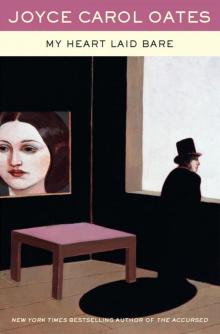 My Heart Laid Bare
My Heart Laid Bare A Fair Maiden
A Fair Maiden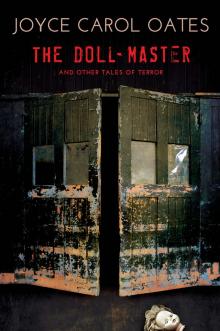 The Doll-Master and Other Tales of Terror
The Doll-Master and Other Tales of Terror Wild Nights!: Stories About the Last Days of Poe, Dickinson, Twain, James, and Hemingway
Wild Nights!: Stories About the Last Days of Poe, Dickinson, Twain, James, and Hemingway Two or Three Things I Forgot to Tell You
Two or Three Things I Forgot to Tell You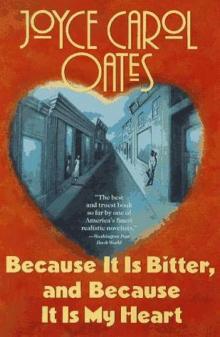 Because It Is Bitter, and Because It Is My Heart
Because It Is Bitter, and Because It Is My Heart Missing Mom: A Novel
Missing Mom: A Novel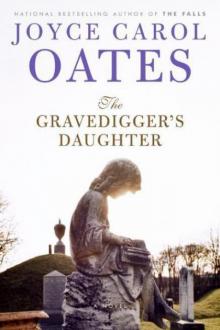 The Gravedigger's Daughter: A Novel
The Gravedigger's Daughter: A Novel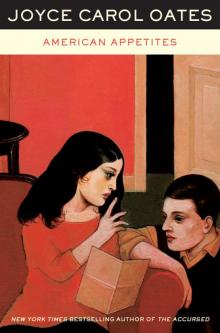 American Appetites
American Appetites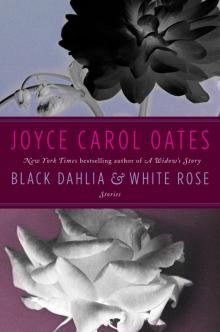 Black Dahlia White Rose: Stories
Black Dahlia White Rose: Stories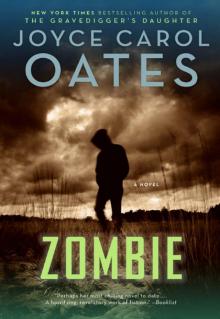 Zombie
Zombie Soul at the White Heat: Inspiration, Obsession, and the Writing Life
Soul at the White Heat: Inspiration, Obsession, and the Writing Life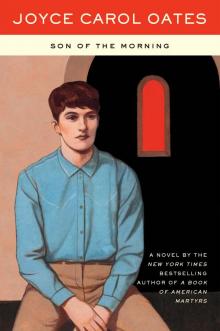 Son of the Morning
Son of the Morning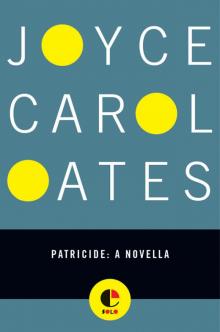 Patricide
Patricide Snake Eyes
Snake Eyes Wonderland
Wonderland In Rough Country: Essays and Reviews
In Rough Country: Essays and Reviews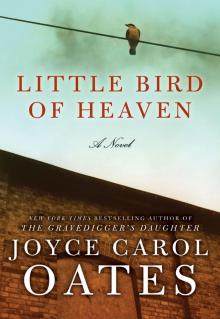 Little Bird of Heaven
Little Bird of Heaven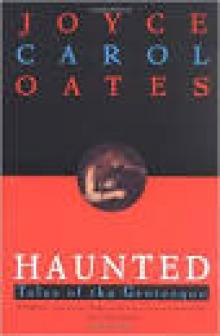 The Haunting
The Haunting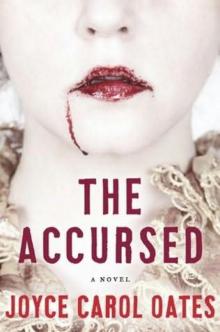 The Accursed
The Accursed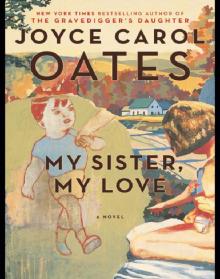 My Sister, My Love: The Intimate Story of Skyler Rampike
My Sister, My Love: The Intimate Story of Skyler Rampike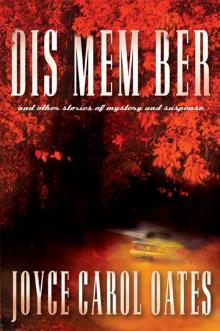 Dis Mem Ber and Other Stories of Mystery and Suspense
Dis Mem Ber and Other Stories of Mystery and Suspense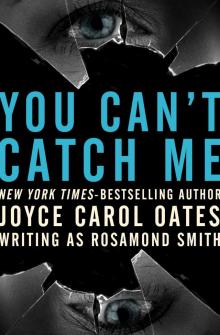 You Can't Catch Me
You Can't Catch Me Daddy Love: A Novel
Daddy Love: A Novel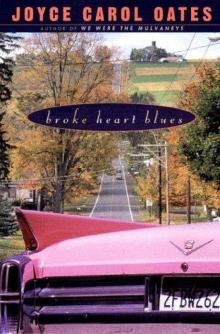 Broke Heart Blues
Broke Heart Blues I'll Take You There
I'll Take You There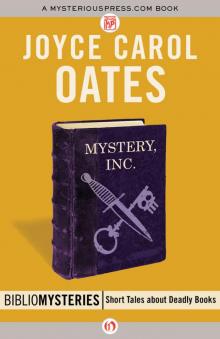 Mystery, Inc.
Mystery, Inc. We Were The Mulvaneys
We Were The Mulvaneys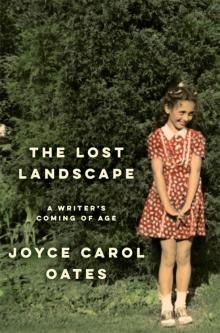 The Lost Landscape: A Writer's Coming of Age
The Lost Landscape: A Writer's Coming of Age Evil Eye: Four Novellas of Love Gone Wrong
Evil Eye: Four Novellas of Love Gone Wrong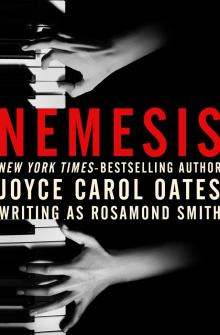 Nemesis
Nemesis Beautiful Days: Stories
Beautiful Days: Stories On Boxing
On Boxing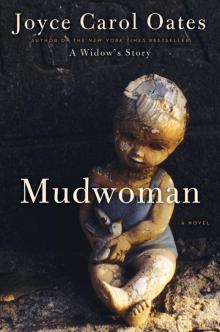 Mudwoman
Mudwoman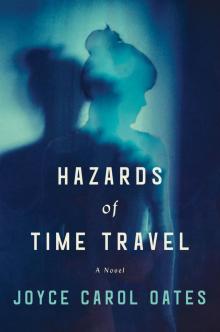 Hazards of Time Travel
Hazards of Time Travel Night-Gaunts and Other Tales of Suspense
Night-Gaunts and Other Tales of Suspense Mysteries of Winterthurn
Mysteries of Winterthurn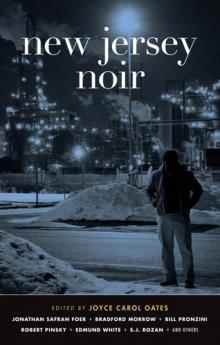 New Jersey Noir
New Jersey Noir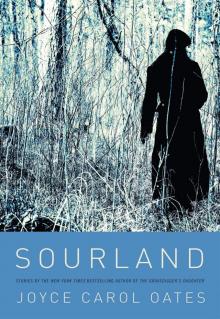 Sourland
Sourland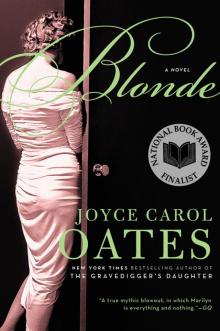 Blonde
Blonde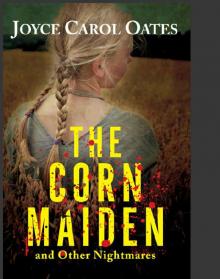 The Corn Maiden: And Other Nightmares
The Corn Maiden: And Other Nightmares The Oxford Book of American Short Stories
The Oxford Book of American Short Stories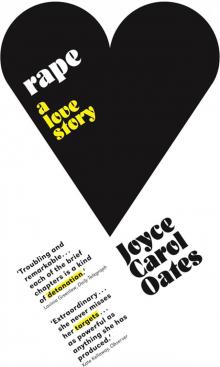 Rape: A Love Story
Rape: A Love Story Lovely, Dark, Deep: Stories
Lovely, Dark, Deep: Stories After the Wreck, I Picked Myself Up, Spread My Wings, and Flew Away
After the Wreck, I Picked Myself Up, Spread My Wings, and Flew Away Freaky Green Eyes
Freaky Green Eyes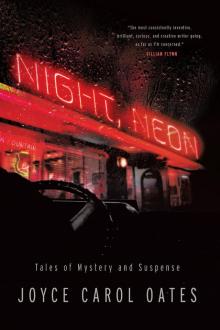 Night, Neon
Night, Neon I Am No One You Know: And Other Stories
I Am No One You Know: And Other Stories Black Water
Black Water Expensive People
Expensive People The Falls
The Falls Soul/Mate
Soul/Mate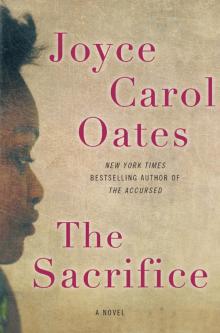 The Sacrifice
The Sacrifice The (Other) You
The (Other) You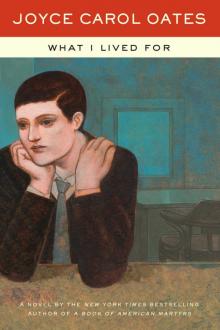 What I Lived For
What I Lived For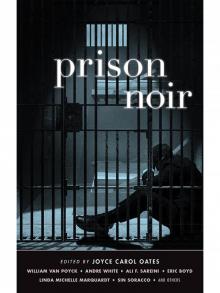 Prison Noir
Prison Noir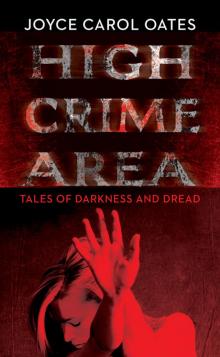 High Crime Area: Tales of Darkness and Dread
High Crime Area: Tales of Darkness and Dread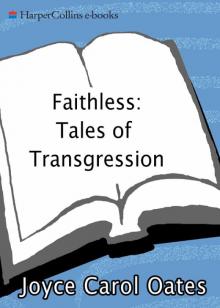 Faithless: Tales of Transgression
Faithless: Tales of Transgression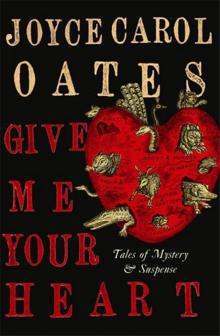 Give Me Your Heart: Tales of Mystery and Suspense
Give Me Your Heart: Tales of Mystery and Suspense The Rescuer
The Rescuer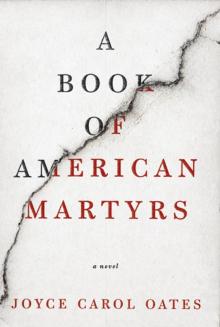 A Book of American Martyrs
A Book of American Martyrs American Melancholy
American Melancholy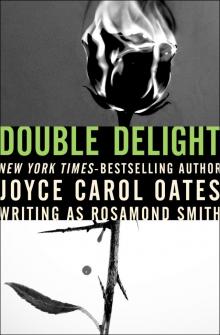 Double Delight
Double Delight Big Mouth Ugly Girl
Big Mouth Ugly Girl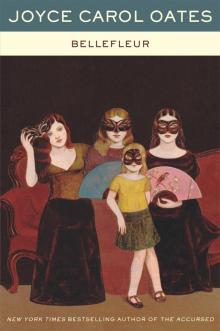 Bellefleur
Bellefleur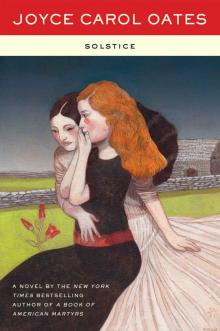 Solstice
Solstice Big Mouth & Ugly Girl
Big Mouth & Ugly Girl Evil Eye
Evil Eye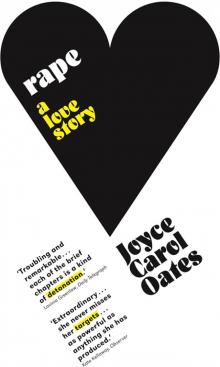 Rape
Rape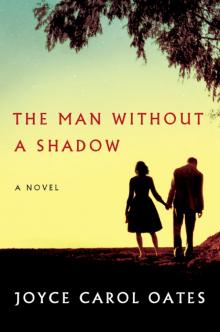 The Man Without a Shadow
The Man Without a Shadow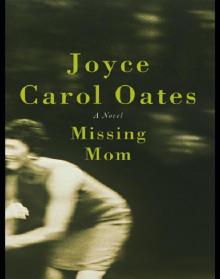 Missing Mom
Missing Mom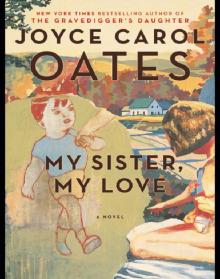 My Sister, My Love
My Sister, My Love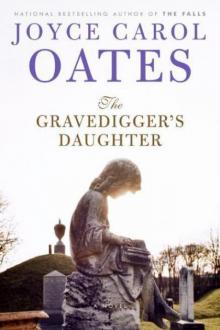 The Gravedigger's Daughter
The Gravedigger's Daughter Beautiful Days
Beautiful Days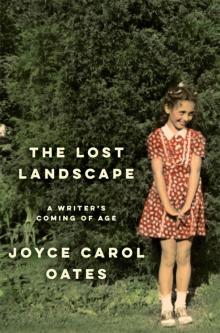 The Lost Landscape
The Lost Landscape Daddy Love
Daddy Love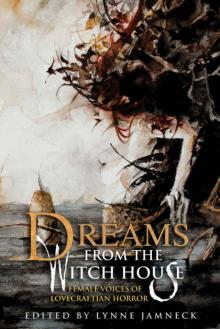 Dreams from the Witch House: Female Voices of Lovecraftian Horror
Dreams from the Witch House: Female Voices of Lovecraftian Horror The Tattooed Girl
The Tattooed Girl Give Me Your Heart
Give Me Your Heart In Rough Country
In Rough Country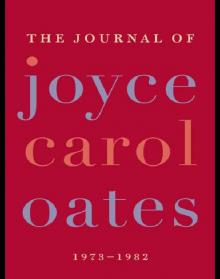 The Journal of Joyce Carol Oates
The Journal of Joyce Carol Oates Black Dahlia & White Rose: Stories
Black Dahlia & White Rose: Stories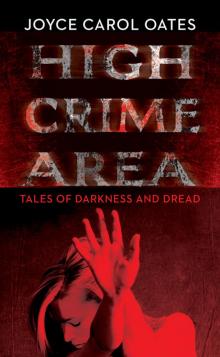 High Crime Area
High Crime Area Lovely, Dark, Deep
Lovely, Dark, Deep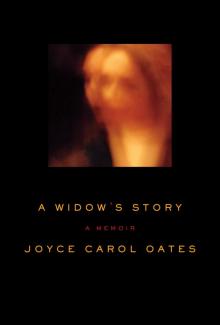 A Widow's Story
A Widow's Story Soul at the White Heat
Soul at the White Heat Wild Nights!
Wild Nights!